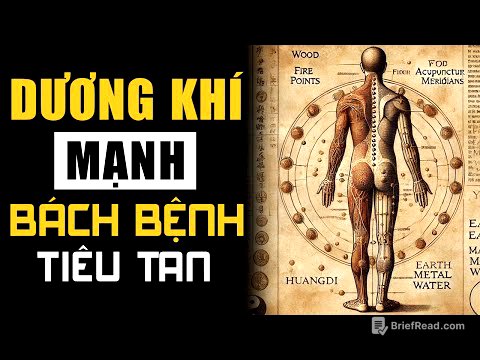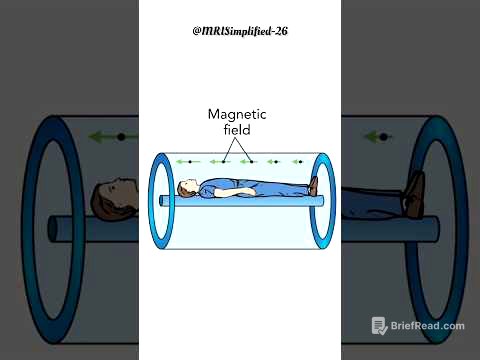TLDR;
This video provides a comprehensive overview of the structure of the atom, covering topics from the discovery of subatomic particles to quantum mechanical models. It emphasizes key concepts, important formulas, and problem-solving techniques relevant for the JEE exam.
- Discovery of subatomic particles (electrons, protons, neutrons)
- Atomic models (Thomson, Rutherford, Bohr, Quantum Mechanical)
- Dual nature of electromagnetic radiation and matter
- Quantum numbers and their significance
- Electronic configuration and stability
- Key formulas for energy, radius, velocity, and wavelength
Introduction [0:00]
The chapter on the structure of the atom is a scoring one. The probability of finding an electron is linked to the size and region where the square of the wave function is maximum. The chapter will cover topics such as subatomic particles, atomic models, isotopes, electromagnetic radiation, the photoelectric effect, atomic spectra, Bohr's model, matter's dual nature, Heisenberg's uncertainty principle, and quantum mechanical models.
Cathode Ray Tube [4:11]
J.J. Thomson discovered the electron using a cathode ray tube experiment. The experiment involves a glass tube with cathode and anode electrodes, a vacuum pump to maintain low pressure, and a high voltage battery. The anode has small holes, and the tube is coated with zinc sulfide, which glows when hit by particles. When high voltage is applied, rays are emitted from the cathode towards the anode, creating a glow. These rays are composed of negatively charged particles, named electrons. The properties of cathode rays are independent of the gas used in the tube.
Discovery of Proton [10:29]
Positively charged particles move from the anode to the cathode, forming anode rays or canal rays. The charge of these particles is positive. If hydrogen gas is used, the positively charged particle is a proton (H+). The properties of anode rays depend on the nature of the gas. The charge of a proton is +1.6 x 10^-19 Coulombs, and its mass is 1.672 x 10^-27 kg. Specific charge is the ratio of charge to mass. Relative charge of a proton is +1, and relative mass is 1 u.
Question [16:10]
The specific charge of cathode rays is constant, meaning the ratio of charge to mass is constant. Two particles, A and B, have specific charge ratios of 5:2, and the mass ratio of A to B is 2/3. The question asks for the ratio of charges of A to B, which can be calculated using the given ratios.
Atomic Models [18:22]
The video discusses various atomic models, including Thomson's plum pudding model, Rutherford's nuclear model, Bohr's atomic model, and the quantum mechanical model. Thomson's model describes the atom as a sphere with uniformly distributed positive charge and embedded negative charges. This model is also known as the watermelon model. The limitations of Thomson's model are that it doesn't explain the stability of the atom or the existence of the nucleus.
Isotopes [34:36]
Isotopes are atoms of the same element with the same atomic number but different mass numbers (e.g., hydrogen isotopes: 1H1, 1H2, 1H3). Isotones are atoms with the same number of neutrons. Isoelectronic species have the same number of electrons. Isobars are substances with the same mass number. Isodiapers have the same difference between the number of neutrons and protons. Isosteres are molecules or ions with similar size, number of atoms, and valence electrons.
Dual Nature of Electromagnetic Radiations [41:30]
Electromagnetic radiation exhibits dual nature, behaving as both a wave and a particle. Electromagnetic radiation consists of electric and magnetic fields oscillating perpendicularly to each other and to the direction of propagation. Different electromagnetic radiations have different wavelengths and frequencies. The electromagnetic spectrum includes gamma rays, X-rays, UV, visible light, infrared, microwaves, and radio waves. Wavelength and frequency are inversely proportional (ν = c / λ).
Photoelectric Effect [1:02:15]
The photoelectric effect is the emission of electrons from a metal surface when light of a certain frequency shines on it. The minimum frequency required for electron emission is called the threshold frequency (ν₀). The number of photoelectrons emitted is directly proportional to the intensity of light and independent of the frequency of light. The kinetic energy of the photoelectrons is directly proportional to the frequency of light and independent of the intensity of light. Einstein explained the photoelectric effect with the equation: E = hν = Φ + KE, where Φ is the work function (hν₀).
What is Spectrum? [1:14:15]
A spectrum is an arrangement of electromagnetic radiation in increasing or decreasing order of wavelength or frequency. There are two types of spectra: continuous and discontinuous. A continuous spectrum contains all wavelengths within a range, while a discontinuous spectrum contains only specific wavelengths. Discontinuous spectra are further divided into emission and absorption spectra. Emission spectra consist of bright lines on a dark background, while absorption spectra consist of dark lines on a bright background.
Bohr's Atomic Model [1:28:00]
Bohr's atomic model postulates that electrons revolve around the nucleus in fixed circular orbits or energy levels without emitting radiation. Electrons can only occupy orbits with specific angular momentum values (mvr = nh/2π). When an electron transitions from one energy level to another, it absorbs or emits energy equal to the energy difference between the levels. Key formulas include radius of orbit (r = 0.529 * n²/Z Å), velocity of electron (v = 2.19 x 10^6 * Z/n m/s), and energy of electron (E = -13.6 * Z²/n² eV).
Limitations of Bohr's Atomic Model [1:53:25]
Bohr's atomic model has several limitations. It is only applicable to single-electron species. It cannot explain the Zeeman and Stark effects (splitting of spectral lines in magnetic and electric fields). It cannot explain the fine structure of spectral lines observed with high-resolution spectroscopy.
Dual Nature of Matter [1:56:20]
De Broglie proposed that matter exhibits dual nature, behaving as both particles and waves. The de Broglie wavelength (λ) associated with a particle is given by λ = h/p = h/mv, where h is Planck's constant, m is mass, and v is velocity. The de Broglie wavelength can also be expressed in terms of kinetic energy (KE) as λ = h/√(2mKE) or accelerating potential (V) as λ = h/√(2mqV). These formulas are significant for microscopic particles only.
Heisenberg'suncertainity principle [2:14:25]
Heisenberg's uncertainty principle states that it is impossible to simultaneously determine the exact position and momentum of a particle with 100% accuracy. The uncertainty in position (Δx) and momentum (Δp) is related by the inequality: Δx * Δp ≥ h/4π. This principle is significant for microscopic particles only.
Quantum Mechanical Model [2:27:30]
The quantum mechanical model considers the dual nature of electrons and treats them as three-dimensional waves. The model is based on the Schrödinger wave equation: Hψ = Eψ, where ψ is the wave function, H is the Hamiltonian operator, and E is the energy. The wave function (ψ) has no physical significance, but its square (ψ²) represents the probability density of finding an electron in a given region.
Shape of Atomic Orbitals [2:56:25]
Atomic orbitals are regions around the nucleus where the probability of finding an electron is maximum. The shape of atomic orbitals is determined by the angular quantum number (l). s orbitals are spherical, p orbitals are dumbbell-shaped, and d orbitals are double dumbbell-shaped. Radial nodes are regions where the probability of finding an electron is zero, and they are spherical in shape. Angular nodes (nodal planes) are planes passing through the nucleus where the probability of finding an electron is zero.
Energy of Atomic Orbitals [3:12:10]
For single-electron species (e.g., hydrogen), the energy of atomic orbitals depends only on the principal quantum number (n). For multi-electron species, the energy of atomic orbitals depends on both n and l, following the (n + l) rule. Orbitals with lower (n + l) values have lower energy. If two orbitals have the same (n + l) value, the orbital with the lower n value has lower energy. The filling of electrons in atomic orbitals follows the Aufbau principle, Hund's rule of maximum multiplicity, and the Pauli exclusion principle.









